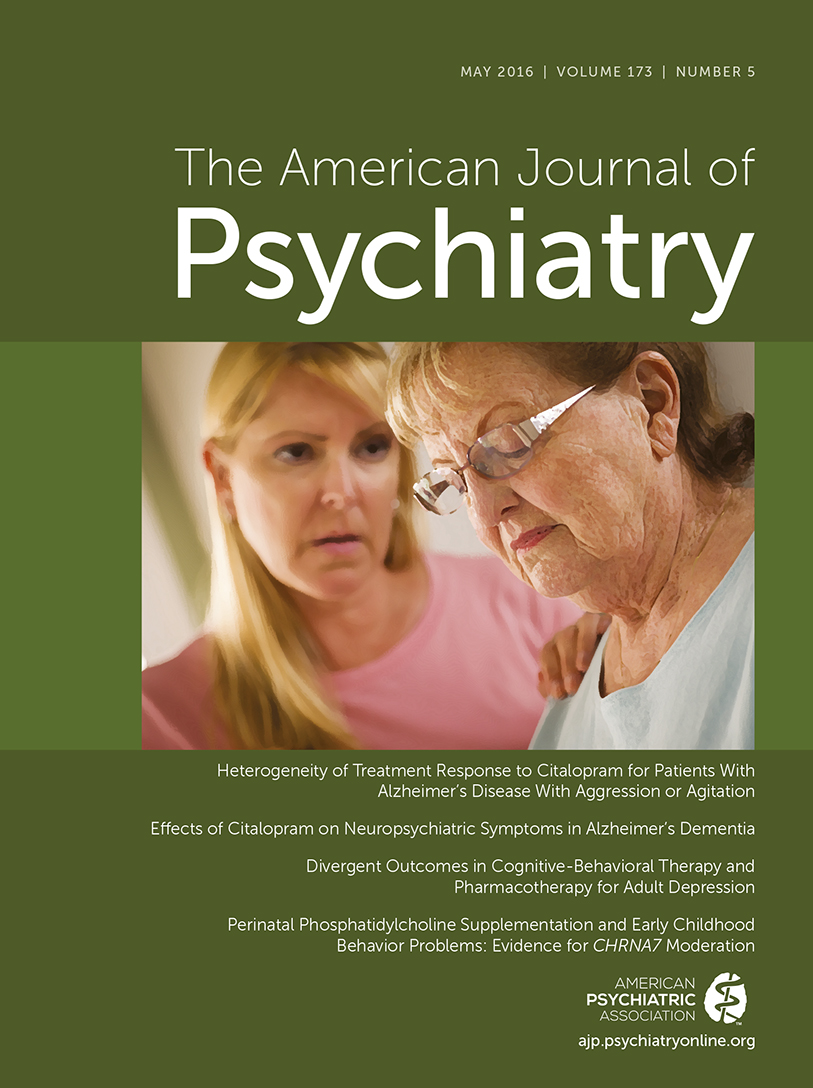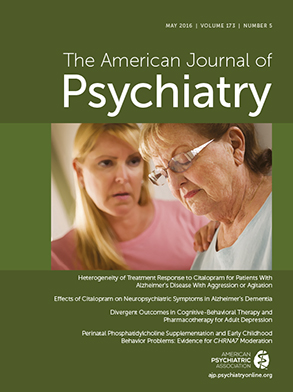In a recent report on the ongoing painkiller addiction epidemic (
1), CBS News looked at West Virginia, “a state that is attempting a drastic solution: allowing addicts to sue the doctors who got them hooked.” According to the article, “West Virginia has the highest rate of overdose deaths in the nation,” and “each year doctors write the equivalent of one painkiller prescription for every man, woman, and child” in the state.
Addiction to prescription opioids is a national epidemic, which is inspiring crisis solutions, as the CBS News reports, but opioids obviously have substantial therapeutic uses. Potential therapeutic uses beyond analgesia are described in this issue in two articles reporting studies of buprenorphine—one by Fava et al. (
2), using buprenorphine adjunctively as an antidepressant, and the other by Yovell et al. (
3), using it in ultra-low doses (0.1–0.2 mg/day) as a rapid treatment for severe suicidal ideation in patients without substance abuse.
Buprenorphine is a partial mu-opioid agonist that unfortunately has been abused worldwide (
4–
6). The antidepressant potential of opioids has been known for centuries, but their dependence-producing properties led to the rapid adoption of new antidepressants once they became available in the 1950s, starting with monoamine oxidase inhibitors (
7,
8). However, buprenorphine is a somewhat unusual opioid, and its unusual properties led to its becoming a very important treatment agent for over 3 million opioid-dependent patients in the United States since it received approval from the Food and Drug Administration (FDA) for this indication in 2002 (
9). Its intranasal or intravenous abuse occurs at doses typically below 2 mg, at which it acts primarily as a mu-opioid agonist and kappa-opioid antagonist. However, as the dose is increased to 8 mg or higher, buprenorphine becomes a mu-opioid antagonist, such that in contrast to other opioids, it can precipitate withdrawal in individuals who are already opioid dependent, and it rarely produces overdoses. At these higher antagonist doses, in the range of 8–24 mg sublingually daily, it has been a very effective treatment for opioid dependence by relieving withdrawal and craving while blocking other opioids and blocking even itself from producing overdoses (
10). Interestingly, the Fava et al. depression study (
2) implements the higher antagonist buprenorphine dose of 8 mg daily and combines it with a mu-opioid antagonist (samidorphan) to further focus on buprenorphine’s kappa-opioid antagonism rather than mu agonism (
11). However, the Yovell et al. suicidal ideation study used a maximum buprenorphine dosage of 0.8 mg/day and started at 0.1 or 0.2 mg/day, which are dosages well into the range where analgesia and abuse can occur, particularly without including a concomitant mu-opioid antagonist. An important point is that mu-opioid antagonists such as naltrexone are not abused and have not shown antidepressant or suicide prevention effects (
12). Thus, “clamping” basal endogenous mu-opioid tone into a more normal neutral range or simply kappa antagonism appear to be possible mechanisms of action for buprenorphine’s efficacy in depression, as had been suggested by earlier work (
13–
16). Several pharmaceutical companies have new kappa antagonists in clinical trials. None of these kappa antagonists seem in danger of being classified by the Drug Enforcement Administration (DEA) as having abuse potential, while buprenorphine is a DEA schedule III agent. Thus, regulatory hurdles might be encountered with this new formulation of buprenorphine, as has been the case for ketamine’s use in depression.
Thus, we are offered two new studies showing that buprenorphine can help treat a very common disorder—depression, which affects many patients whose illnesses are resistant to our current treatments. However, this opioid agonist has abuse liability and the potential to produce opioid dependence in opioid-naive patients, particularly when used at low intranasal doses. This intranasal abuse can be a gateway to opioid dependence among adolescents and chronic pain patients even with formulations that also contain an opioid antagonist such as naloxone. To reduce the potential for intranasal abuse, two formulations other than pills have been developed: a mucosal film and a depot implant that is inserted under the skin (
17,
18). The implant can deliver the medication for months. Using either one of these technologies for delivery might vastly reduce the abuse liability during long-term outpatient dispensing with take-home doses of the film for even a month. Using the depot implant would be impractical for initial dose adjustments over the first few days or weeks, but the mucosal film would certainly offer this adjustment potential. We therefore might have a new medication for addressing treatment-resistant depression. Its potential for producing opioid dependence remains to be determined in longer-term studies, but the diversion of buprenorphine from patients without substance abuse to the “doctor shoppers” who have prescription opioid use disorders seems less likely with these newly developed formulations.
Several new questions also arise from practical implementation considerations of this treatment. First, a surgical insertion of a buprenorphine implant is not a typical psychiatric practice, and furthermore, removal of the implant is required several months later, after the buprenorphine in it is exhausted. Removal of these implants has been technically difficult because of potential breakage of its packaging on attempted removal. Leaving the nondissolving packaging in the patient is not possible, since it can become a site for infection and abscess formation (
18). Second, buprenorphine is a schedule III drug, and the implants will contain a large amount (about 300 mg) of liquid buprenorphine that can be injected, snorted, or otherwise abused by simply removing it from the implant. The street price of buprenorphine for diversion is typically $10 for 8 mg, so each implant is worth $375 or more. Moreover, how to get the implants dispensed at the pharmacy and brought to the physicians’ offices for insertion without diversion needs consideration. Third, the cost of buprenorphine in a minimally abused formulation may be significantly more than generic sublingual or skin-patch buprenorphine alone, which is available for analgesia. How will the market and managed pharmacy benefits respond to a substantially higher cost for a buprenorphine formulation that is FDA-approved for depression or even suicidality?
Every new therapeutic agent has its practical complications in moving to commercialization, and it is perhaps too early for debate, when these are only the first two studies and both have some methodological issues in their design. In particular, the Fava et al. depression study used a sequential parallel comparison design with a two-stage randomization to eliminate placebo responders, which is relatively new for psychiatry and has been criticized (
19,
20). Nonetheless, opioids are not new as antidepressants, and kappa-opioid antagonists appear to have a bright future that many pharmaceutical companies are pursuing. Thus, buprenorphine is here and available now for our patients in various formulations. It may be that no physician will want to prescribe buprenorphine for any reason, at least in West Virginia, where prescribing physicians might be sued by patients who become addicted. However, in contrast to the wildfire adoption of ketamine for acute depression, buprenorphine has excellent long-term safety data and has almost no possibility for overdose (
9,
10,
21). We can all hope that the leads reported in these two studies are rapidly followed up and that if further studies confirm the efficacy of these approaches, regulatory and legal impediments (such as in West Virginia) can be quickly overcome in the development and FDA approval of this old and reliable medication for treatment-resistant depression and its all too common symptom of suicidality.

